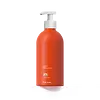What's inside
What's inside
 Key Ingredients
Key Ingredients

 Benefits
Benefits

 Concerns
Concerns

 Ingredients Side-by-side
Ingredients Side-by-side

Water
Skin ConditioningDiethylhexyl Succinate
EmollientC12-15 Alkyl Benzoate
AntimicrobialGlycolic Acid
BufferingCetearyl Alcohol
EmollientPotassium Hydroxide
BufferingGlyceryl Stearate
EmollientPEG-100 Stearate
Retinol
Skin ConditioningLactic Acid
BufferingUrea
BufferingSqualane
EmollientGlycerin
HumectantPhospholipids
Skin ConditioningUbiquinone
AntioxidantCamellia Sinensis Leaf Extract
AntimicrobialTocopheryl Acetate
AntioxidantC13-14 Isoparaffin
EmollientCaprylic/Capric Triglyceride
MaskingPolyacrylamide
Laureth-7
EmulsifyingCetearyl Glucoside
EmulsifyingXanthan Gum
EmulsifyingPotassium Sorbate
PreservativeSodium Benzoate
MaskingPhenoxyethanol
PreservativeDisodium EDTA
Water, Diethylhexyl Succinate, C12-15 Alkyl Benzoate, Glycolic Acid, Cetearyl Alcohol, Potassium Hydroxide, Glyceryl Stearate, PEG-100 Stearate, Retinol, Lactic Acid, Urea, Squalane, Glycerin, Phospholipids, Ubiquinone, Camellia Sinensis Leaf Extract, Tocopheryl Acetate, C13-14 Isoparaffin, Caprylic/Capric Triglyceride, Polyacrylamide, Laureth-7, Cetearyl Glucoside, Xanthan Gum, Potassium Sorbate, Sodium Benzoate, Phenoxyethanol, Disodium EDTA
Water
Skin ConditioningC12-15 Alkyl Benzoate
AntimicrobialGlycerin
HumectantAloe Barbadensis Leaf Juice
Skin ConditioningCoco-Caprylate/Caprate
EmollientHydroxyethyl Acrylate/Sodium Acryloyldimethyl Taurate Copolymer
Emulsion Stabilising1,2-Hexanediol
Skin ConditioningC13-14 Alkane
SolventC15-23 Alkane
SolventCaprylyl Glycol
EmollientCitric Acid
BufferingCitrus Aurantifolia Fruit Extract
Skin ConditioningDecyl Glucoside
CleansingFucus Vesiculosus
Skin ConditioningAlgae
Skin ConditioningKappaphycus Alvarezii Extract
Skin ConditioningLeuconostoc/Radish Root Ferment Filtrate
AntimicrobialMelia Azadirachta Flower Extract
Skin ConditioningMelia Azadirachta Leaf Extract
Skin ConditioningOlea Europaea Fruit Oil
MaskingSodium Benzoate
MaskingPotassium Sorbate
PreservativePanthenol
Skin ConditioningSodium Sulfite
PreservativeSea Water
HumectantSodium Polyacrylate Starch
AbsorbentTerminalia Ferdinandiana Fruit Extract
AntioxidantTropolone
Skin Conditioning2,6-Dimethyl-7-Octen-2-Ol
MaskingCedrus Atlantica Wood Oil
PerfumingCistus Ladaniferus Resin
MaskingDodecahydro-Tetramethylnaphthofuran
PerfumingEthyl Hydroxypyrone
MaskingFusanus Spicatus Wood Oil
MaskingGamma-Decalactone
PerfumingGamma-Octalactone
PerfumingGamma-Valerolactone
PerfumingJuniperus Virginiana Oil
MaskingMyrtus Communis Oil
MaskingOctanal
PerfumingPhenethyl Alcohol
MaskingPogostemon Cablin Leaf Oil
MaskingThuja Plicata Wood Oil
MaskingTriethyl Citrate
MaskingWater, C12-15 Alkyl Benzoate, Glycerin, Aloe Barbadensis Leaf Juice, Coco-Caprylate/Caprate, Hydroxyethyl Acrylate/Sodium Acryloyldimethyl Taurate Copolymer, 1,2-Hexanediol, C13-14 Alkane, C15-23 Alkane, Caprylyl Glycol, Citric Acid, Citrus Aurantifolia Fruit Extract, Decyl Glucoside, Fucus Vesiculosus, Algae, Kappaphycus Alvarezii Extract, Leuconostoc/Radish Root Ferment Filtrate, Melia Azadirachta Flower Extract, Melia Azadirachta Leaf Extract, Olea Europaea Fruit Oil, Sodium Benzoate, Potassium Sorbate, Panthenol, Sodium Sulfite, Sea Water, Sodium Polyacrylate Starch, Terminalia Ferdinandiana Fruit Extract, Tropolone, 2,6-Dimethyl-7-Octen-2-Ol, Cedrus Atlantica Wood Oil, Cistus Ladaniferus Resin, Dodecahydro-Tetramethylnaphthofuran, Ethyl Hydroxypyrone, Fusanus Spicatus Wood Oil, Gamma-Decalactone, Gamma-Octalactone, Gamma-Valerolactone, Juniperus Virginiana Oil, Myrtus Communis Oil, Octanal, Phenethyl Alcohol, Pogostemon Cablin Leaf Oil, Thuja Plicata Wood Oil, Triethyl Citrate
 Reviews
Reviews

Alternatives
Ingredients Explained
These ingredients are found in both products.
Ingredients higher up in an ingredient list are typically present in a larger amount.
C12-15 Alkyl Benzoate is made up of Benzoic Acid and long chain alcohols. It has a low molecular weight.
C12-15 Alkyl Benzoate is an emollient and texture enhancer. Due to its solubility, it is often used in sunscreens to help evenly distribute active ingredients.
As an emollient, C12-15 Alkyl Benzoate helps soften and hydrate your skin. Emollients create a film on your skin that traps moisture within.
This ingredient has been reported to cause eye irritation.
Learn more about C12-15 Alkyl BenzoateGlycerin is already naturally found in your skin. It helps moisturize and protect your skin.
A study from 2016 found glycerin to be more effective as a humectant than AHAs and hyaluronic acid.
As a humectant, it helps the skin stay hydrated by pulling moisture to your skin. The low molecular weight of glycerin allows it to pull moisture into the deeper layers of your skin.
Hydrated skin improves your skin barrier; Your skin barrier helps protect against irritants and bacteria.
Glycerin has also been found to have antimicrobial and antiviral properties. Due to these properties, glycerin is often used in wound and burn treatments.
In cosmetics, glycerin is usually derived from plants such as soybean or palm. However, it can also be sourced from animals, such as tallow or animal fat.
This ingredient is organic, colorless, odorless, and non-toxic.
Glycerin is the name for this ingredient in American English. British English uses Glycerol/Glycerine.
Learn more about GlycerinPotassium Sorbate is a preservative used to prevent yeast and mold in products. It is commonly found in both cosmetic and food products.
This ingredient comes from potassium salt derived from sorbic acid. Sorbic acid is a natural antibiotic and effective against fungus.
Both potassium sorbate and sorbic acid can be found in baked goods, cheeses, dried meats, dried fruit, ice cream, pickles, wine, yogurt, and more.
You'll often find this ingredient used with other preservatives.
Learn more about Potassium SorbateSodium Benzoate is a preservative. It's used in both cosmetic and food products to inhibit the growth of mold and bacteria. It is typically produced synthetically.
Both the US FDA and EU Health Committee have approved the use of sodium benzoate. In the US, levels of 0.1% (of the total product) are allowed.
Sodium benzoate works as a preservative by inhibiting the growth of bacteria inside of cells. It prevents the cell from fermenting a type of sugar using an enzyme called phosphofructokinase.
It is the salt of benzoic acid. Foods containing sodium benzoate include soda, salad dressings, condiments, fruit juices, wines, and snack foods.
Studies for using ascorbic acid and sodium benzoate in cosmetics are lacking, especially in skincare routines with multiple steps.
We always recommend speaking with a professional, such as a dermatologist, if you have any concerns.
Learn more about Sodium BenzoateWater. It's the most common cosmetic ingredient of all. You'll usually see it at the top of ingredient lists, meaning that it makes up the largest part of the product.
So why is it so popular? Water most often acts as a solvent - this means that it helps dissolve other ingredients into the formulation.
You'll also recognize water as that liquid we all need to stay alive. If you see this, drink a glass of water. Stay hydrated!
Learn more about Water